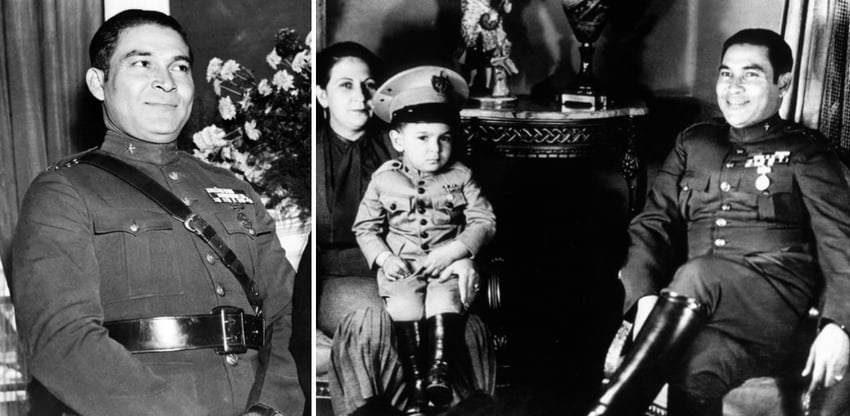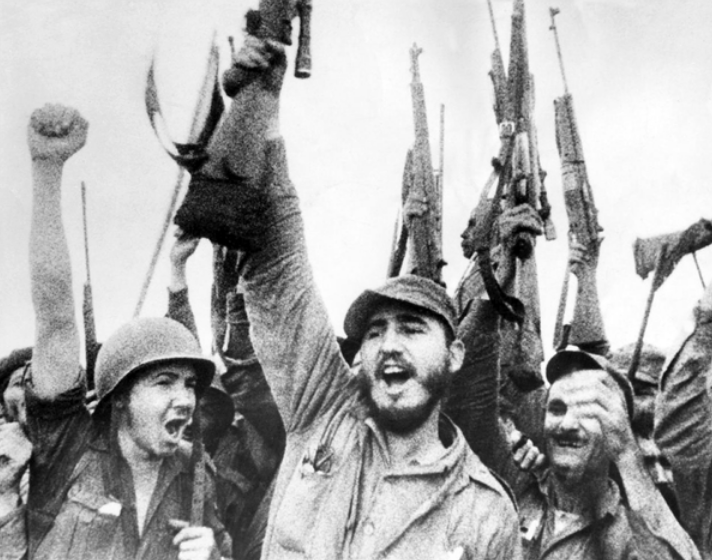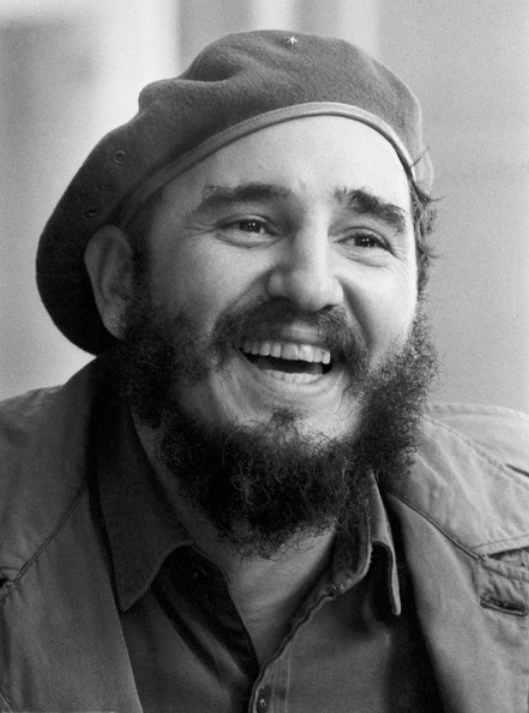
Fidel Castro: Communist, Revolutionary, President
Friday, December 2nd of this year marked the 40th anniversary of Cuban revolutionary Fidel Castro first taking office as President of the Council of Ministers of Cuba (Cuba’s highest ranking official status). This month, Bridgeman Images takes a look back through our archive of images and clips of the infamous Cuban nationalist.
The Beginnings
Fidel Alejandro Castro Ruz was born to a family of seven children on August 13th, 1926 to Ángel Castro y Argiz, a sugar cane farmer, and Lina Ruz González, his father’s household servant and second wife. At a young age, Castro was sent off to live with his teacher and was baptized into the Roman Catholic Church, which enabled him to attend La Salle boarding school (a Catholic institution in Santiago, Cuba). Though he did not excel academically in school, Castro began studying law at the University of Havana in 1945. Castro described himself as “politically illiterate,” but became heavily interested and involved in student activism which juxtaposed his involvement in the gang culture that was present at the University of Havana.

Left: The three bothers Castro : Fidel Raul and Ramon wearing ragala uniform of the Dolores jesuit school in Santiago de Cuba in 1942 / Photo © Tallandier
Right: Fidel Castro at the time of his arrival in Havana university in Cuba in 1946 / Photo © Tallandier
Castro’s position was starkly anti-imperialist, specifically acting against the United States involvement in the Caribbean. He was also extremely vocal in regards to the current President of Cuba at the time, Ramón Grau and the perceived corruption within the Cuban government. This distaste of the current state of the Cuban government lead to Castro joining the Party of the Cuban People – Orthodox (or Partido Ortodoxo, PPC-O) at age 21, whose aims were to establish a distinct Cuban national identity, economic independence and the creation of social reforms within the country. Despite the founder of the PPC-O (Eduardo Chibás) losing the 1948 general election for Cuban president, Castro continued to work tirelessly for the advancement of the Party.
The Cuban Revolution

Left: Cuba: The Cuban dictator Fulgencia Batista, Havana, March 1952 / Pictures from History
Right: Cuban dictator Fulgencio Batista y Zaldivar (1901-1973) here with wife Marta Fernandez de Batista and son Fulgencio Ruben Batista, 1936 / Photo © Tallandier
As time went on and as he became increasingly more involved in the PPC-O and political activism, Castro began to align his beliefs with Marxism and was heavily influenced by the writings of prominent communists Karl Marx, Friedrich Engels, and Vladimir Lenin. His view shifted and, instead of viewing Cuba’s problems as a result of corrupt government officials, he began to view the injustice and corruption within his country as a direct reaction to capitalism (or as in Castro’s words: “dictatorship of the bourgeoisie”). After the PPC-O founder’s politically motivated suicide in 1951, Castro chose to run for Cuban Congress in hopes to continue Chibás’ work. Unfortunately, this was campaign was put on hold in 1952. When Grau left office as President in 1948, he was succeeded by Authentic Party candidate Carlos Prío Socarrás. Due to a military coup that was run by former Cuban President, Fulgencio Batista (who was elected and served as president from 1940-1944), Batista forced Prío to flee to Mexico for safety. This successful coup led to Batista declaring himself the President of Cuba and he cancelled all elections taking place (including the election for Congress), allowing him to establish a dictatorship. Bastisa was quick to establish ties to the wealthy citizens of Cuba and the US government, which resulted in Batista becoming a US-backed dictator from 1952-1959.
In response to this new dictatorship as well as the government’s now increased involvement and relationship with organized crime, Castro formed a new revolutionary group called “The Movement,” whose aim was to break down this dictatorship. He recruited, armed, and trained anti-Batista members (one of these recruited being famous Cuban revolutionary Che Guevara). On July 26, 1953, Castro executed his first planned attack, targeting the Moncada Barracks (a Cuban military fortress). His attack, however, was not a complete success and Castro found himself under arrest by the Cuban police.

Fidel Castro during his interrogation after the attack of the Moncada barracks in Santiago de Cuba, 26th July 1953
While the initial attack on July 26th by the Movement (later renamed the 26th of July Movement) was not a complete success, it lead to the beginning of the Cuban Revolution. Over the next six years, this revolutionary group fought tirelessly using guerrilla warfare to overthrow the Batista dictatorship. Finally, on December 31st, 1958, Bastista could see his time in the Cuban government was over, and he fled to Portugal. Following the success for the revolution, Castro was sworn in as Prime Minister of Cuba and established the first Communist state in the Western Hemisphere.
Revolution Aftermath

Left: Speech of Fidel Castro, head of Cuban state in Havana during which he explains the agreements made with Nikita Kroutchev and USSR October, 30 1962 (at time of cuban missile crisis)
Right: Women Strike For Peace (b/w photo) / Underwood Archives / UIG
The United States came to view Castro’s Communist government as threat, which resulted in an unsuccessful assassination attempt, as well as cutting off all economic ties to the country. The United States government (under President John F. Kennedy) also implemented a sort of counter-revolution sponsored by the CIA, which became known as the Bay of Pigs in 1961. These failed attempts to overthrow Castro and his Communist rule over Cuba caused Castro to form a stronger alliance with the Soviet Union and allowed the Soviet Union to keep nuclear weapons in Cuba, leading to the Cuban Missile Crisis in 1962.
Castro established a Marxist-Leninist form of government, making Cuba became a one-party, socialist state under Communist Party rule. Policies that Castro introduced during his time in power include an economy in which what is produced, how it is produced, and who it will be produced for is decided by the government, as well as expanding healthcare and education. These were also accompanied by by state control of the press and the suppression the public opinion. While many view Fidel Castro as a revolutionary, many considered him a dictator that threatened human rights (specifically those in the US). Castro retired from office in 2008, with his brother Raúl Castro taking over the role. Three months after his 90th birthday, Fidel Castro passed away leaving behind an influential mark on history.

Cuba: Fidel Castro with revolutionary comrades celebrating victory over Batista, 1959 / Pictures from History
View more images and footage of Fidel Castro and the Cuban Revolution from our archive!
Save

